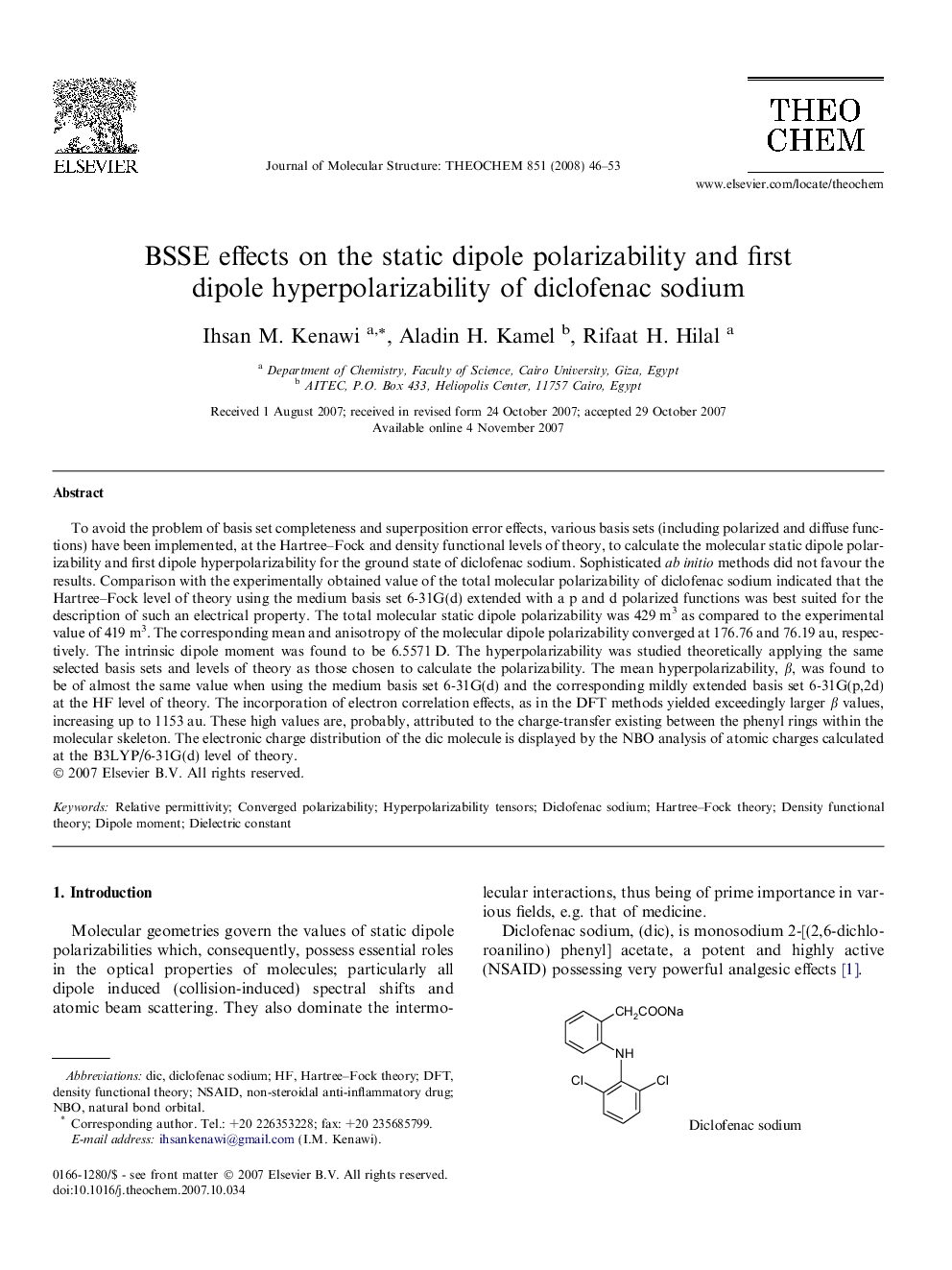| Article ID | Journal | Published Year | Pages | File Type |
|---|---|---|---|---|
| 5418490 | Journal of Molecular Structure: THEOCHEM | 2008 | 8 Pages |
Abstract
To avoid the problem of basis set completeness and superposition error effects, various basis sets (including polarized and diffuse functions) have been implemented, at the Hartree-Fock and density functional levels of theory, to calculate the molecular static dipole polarizability and first dipole hyperpolarizability for the ground state of diclofenac sodium. Sophisticated ab initio methods did not favour the results. Comparison with the experimentally obtained value of the total molecular polarizability of diclofenac sodium indicated that the Hartree-Fock level of theory using the medium basis set 6-31G(d) extended with a p and d polarized functions was best suited for the description of such an electrical property. The total molecular static dipole polarizability was 429 m3 as compared to the experimental value of 419 m3. The corresponding mean and anisotropy of the molecular dipole polarizability converged at 176.76 and 76.19 au, respectively. The intrinsic dipole moment was found to be 6.5571 D. The hyperpolarizability was studied theoretically applying the same selected basis sets and levels of theory as those chosen to calculate the polarizability. The mean hyperpolarizability, β, was found to be of almost the same value when using the medium basis set 6-31G(d) and the corresponding mildly extended basis set 6-31G(p,2d) at the HF level of theory. The incorporation of electron correlation effects, as in the DFT methods yielded exceedingly larger β values, increasing up to 1153 au. These high values are, probably, attributed to the charge-transfer existing between the phenyl rings within the molecular skeleton. The electronic charge distribution of the dic molecule is displayed by the NBO analysis of atomic charges calculated at the B3LYP/6-31G(d) level of theory.
Keywords
Related Topics
Physical Sciences and Engineering
Chemistry
Physical and Theoretical Chemistry
Authors
Ihsan M. Kenawi, Aladin H. Kamel, Rifaat H. Hilal,
